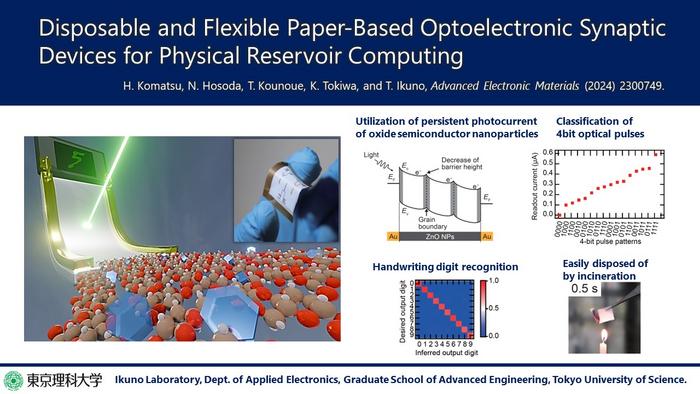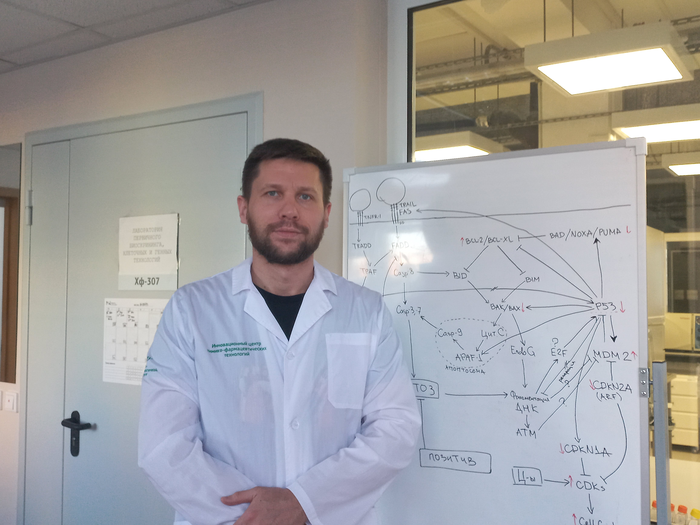From creating images, generating text, and enabling self-driving cars, the potential uses of artificial intelligence (AI) are vast and transformative. However, all this capability comes at a very high energy cost. For instance, estimates indicate that training OPEN AI’s popular GPT-3 model consumed over 1,287 MWh, enough to supply an average U.S. household for 120 years. This energy cost poses a substantial roadblock, particularly for using AI in large-scale applications like health monitoring where large amounts of critical health information are sent to centralized data centers for processing. This not only consumes a lot of energy but also raises concerns about sustainability, bandwidth overload, and communication delays.

Credit: Takashi Ikuno from Tokyo University of Science
From creating images, generating text, and enabling self-driving cars, the potential uses of artificial intelligence (AI) are vast and transformative. However, all this capability comes at a very high energy cost. For instance, estimates indicate that training OPEN AI’s popular GPT-3 model consumed over 1,287 MWh, enough to supply an average U.S. household for 120 years. This energy cost poses a substantial roadblock, particularly for using AI in large-scale applications like health monitoring where large amounts of critical health information are sent to centralized data centers for processing. This not only consumes a lot of energy but also raises concerns about sustainability, bandwidth overload, and communication delays.
Achieving AI-based health monitoring and biological diagnosis requires a standalone sensor that operates independently without the need for constant connection to a central server. At the same time, the sensor must have a low power consumption for prolonged use, should be capable of handling the rapidly changing biological signals for real-time monitoring, be flexible enough to attach comfortably to the human body, and be easy to make and dispose of due to the need for frequent replacements for hygiene reasons.
Considering these criteria, researchers from Tokyo University of Science (TUS) led by Associate Professor Takashi Ikuno have developed a flexible paper-based sensor that operates like the human brain. Their findings were published online in the journal Advanced Electronic Materials on 22 February 2024.
“A paper-based optoelectronic synaptic device composed of nanocellulose and ZnO was developed for realizing physical reservoir computing. This device exhibits synaptic behavior and cognitive tasks at a suitable timescale for health monitoring,” says Dr. Ikuno.
In the human brain, information travels between networks of neurons through synapses. Each neuron can process information on its own, enabling the brain to handle multiple tasks at the same time. This ability for parallel processing makes the brain much more efficient compared to traditional computing systems. To mimic this capability, the researchers fabricated a photo-electronic artificial synapse device composed of gold electrodes on top of a 10 µm transparent film consisting of zinc oxide (ZnO) nanoparticles and cellulose nanofibers (CNFs).
The transparent film serves three main purposes. Firstly, it allows light to pass through, enabling it to handle optical input signals representing various biological information. Secondly, the cellulose nanofibers impart flexibility and can be easily disposed of by incineration. Thirdly, the ZnO nanoparticles are photoresponsive and generate a photocurrent when exposed to pulsed UV light and a constant voltage. This photocurrent mimics the responses transmitted by synapsis in the human brain, enabling the device to interpret and process biological information received from optical sensors.
Notably, the film was able to distinguish 4-bit input optical pulses and generate distinct currents in response to time-series optical input, with a rapid response time on the order of subseconds. This quick response is crucial for detecting sudden changes or abnormalities in health-related signals. Furthermore, when exposed to two successive light pulses, the electrical current response was stronger for the second pulse. This behavior termed post-potentiation facilitation contributes to short-term memory processes in the brain and enhances the ability of synapses to detect and respond to familiar patterns.
To test this, the researchers converted MNIST images, a dataset of handwritten digits, into 4-bit optical pulses. They then irradiated the film with these pulses and measured the current response. Using this data as input, a neural network was able to recognize handwritten numbers with an accuracy of 88%.
Remarkably, this handwritten-digit recognition capability remained unaffected even when the device was repeatedly bent and stretched up to 1,000 times, demonstrating its ruggedness and feasibility for repeated use. “This study highlights the potential of embedding semiconductor nanoparticles in flexible CNF films for use as flexible synaptic devices for PRC,” concludes Dr. Ikuno.
Let us hope that these advancements pave the way for wearable sensors in health monitoring applications!
***
Reference
Title of original paper: Disposable and Flexible Paper-Based Optoelectronic Synaptic Devices for Physical Reservoir Computing
Journal: Advanced Electronic Materials
DOI: https://doi.org/10.1002/aelm.202300749
About The Tokyo University of Science
Tokyo University of Science (TUS) is a well-known and respected university, and the largest science-specialized private research university in Japan, with four campuses in central Tokyo and its suburbs and in Hokkaido. Established in 1881, the university has continually contributed to Japan’s development in science through inculcating the love for science in researchers, technicians, and educators.
With a mission of “Creating science and technology for the harmonious development of nature, human beings, and society,” TUS has undertaken a wide range of research from basic to applied science. TUS has embraced a multidisciplinary approach to research and undertaken intensive study in some of today’s most vital fields. TUS is a meritocracy where the best in science is recognized and nurtured. It is the only private university in Japan that has produced a Nobel Prize winner and the only private university in Asia to produce Nobel Prize winners within the natural sciences field.
Website: https://www.tus.ac.jp/en/mediarelations/
About Associate Professor Takashi Ikuno from Tokyo University of Science
Takashi Ikuno received his Ph.D. degree from Osaka University, whereupon he worked at the Lawrence Berkeley National Laboratory and UC Berkeley, USA, as a postdoctoral researcher and later at Toyota Central R&D Labs as a senior researcher. He currently works as an Associate Professor in the Department of Applied Electronics at Tokyo University of Science (TUS), Japan. His research interests include developing electronic devices with nanocarbon and low-dimensional nanomaterials. He can be reached at tikuno(at sign)rs.tus.ac.jp.
Laboratory website
Official TUS website
Funding information
This work was partly supported by Japan Science and Technology Agency (JST) through the establishment of university fellowships to promote the advancement of science and technology innovation, under Grant Number JPMJFS2144.
Journal
Advanced Electronic Materials
DOI
10.1002/aelm.202300749
Method of Research
Experimental study
Subject of Research
Not applicable
Article Title
Disposable and Flexible Paper-Based Optoelectronic Synaptic Devices for Physical Reservoir Computing
Article Publication Date
22-Feb-2024
COI Statement
The authors declare no competing interests.





